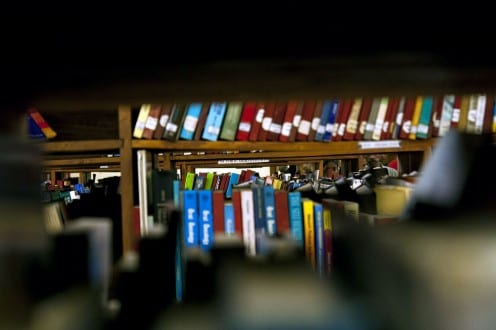It’s not what we find, it’s what you learn that counts
By Daniel Miller, on 1 September 2013

Photo by Gerald Pereira (Creative Commons)
I have now completed two fieldsite visits. I will be visiting six more over the next five months. But already there is one issue that I am becoming increasingly anxious about. Anyone reading this blog regularly would understand why even after five months, which is one-third of our fieldwork, I would predict that this study will surpass even our wildest ambitions in terms of what should be our main criteria, that is the level of original insight this will bring to our understanding of the impact of social and new media on the world today. But that is just the half of it, because I feel the extraordinary richness of engagement at each and every site means that these nine studies should give us a depth of engagement with the wider lives of ordinary people across our contemporary world that is unrivalled.
The two site visits that have confirmed this feeling. In both cases I find the material revelatory. This is partly because the sites are so well chosen. The Indian case of 200,000 (soon to be 700,000) IT workers plonked into the middle of villages creating a radical juxtaposition is symptomatic of the transformation of India. In Brazil I had been very sceptical of this term ‘new middle class,’ because I could not see how you could apply this to the level of domestic cleaning staff and construction workers that populate our fieldsite. But now I have seen how squatting has turned into a strategy for long term property investment, and met the children who go to University and aspire to do post-graduate work abroad, I can see how this site also is perfect for understanding the future of Brazil.
So why I am anxious? It is because I learnt so much from actually visiting the sites themselves. In this project we do a good deal of internal reporting. Both Shriram Venkatraman and Juliano Spyer have already each written around 45,000 word descriptions of their projects. Both have long experience in writing in previous commercial employment and some journalism, and write unusually well. Having seen their sites I don’t see how they could have done a better job of conveying them. Yet to be honest there were so many things I didn’t really get until I actually visited them. The problem is that no one, other than me, will visit all these sites. We hope to gain a huge popular audience for our findings, but none of these people will be able to experience the sites as I have done. The ultimate point of research is not what the researchers have learnt, but what they succeed in conveying to the readership they attract. Even if they both write superb academic and popular books, which I fully expect they will do, it’s just not the same as actually being here.
All of which means that we have to do something else, to bridge that gap, if the project is to deliver as we intend. One possibility is that we learn from online behaviour as to how to use the online to convey academic findings more effectively, whether that be film, user generated content, animation, cartoon, clever graphics or photos, or some interplay between these. I am not sure I have yet seen an ethnographic work that quite managed this. It will be the topic of Sheba Mohammid’s contribution to the project which is a plus. But until this is accomplished, I am going to remain anxious about how we will manage to achieve this ambition. Also I feel very aware of a final contradiction. Since I will have visited all the sites, I will never be able to recreate the naïve state of pre-visiting. So how would I even know if we have succeeded in adding that extra dimension to our dissemination? Hopefully, the answer will lie in the reception of the results by others – hopefully.
 Close
Close




